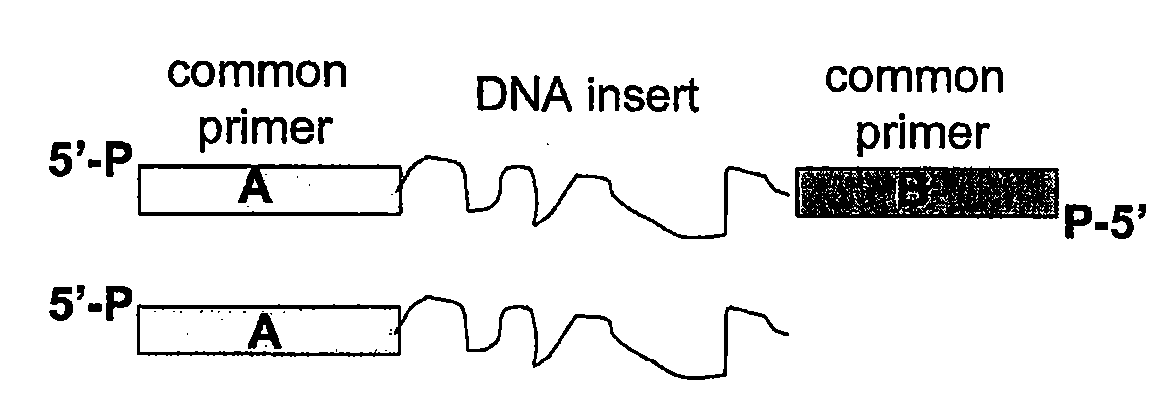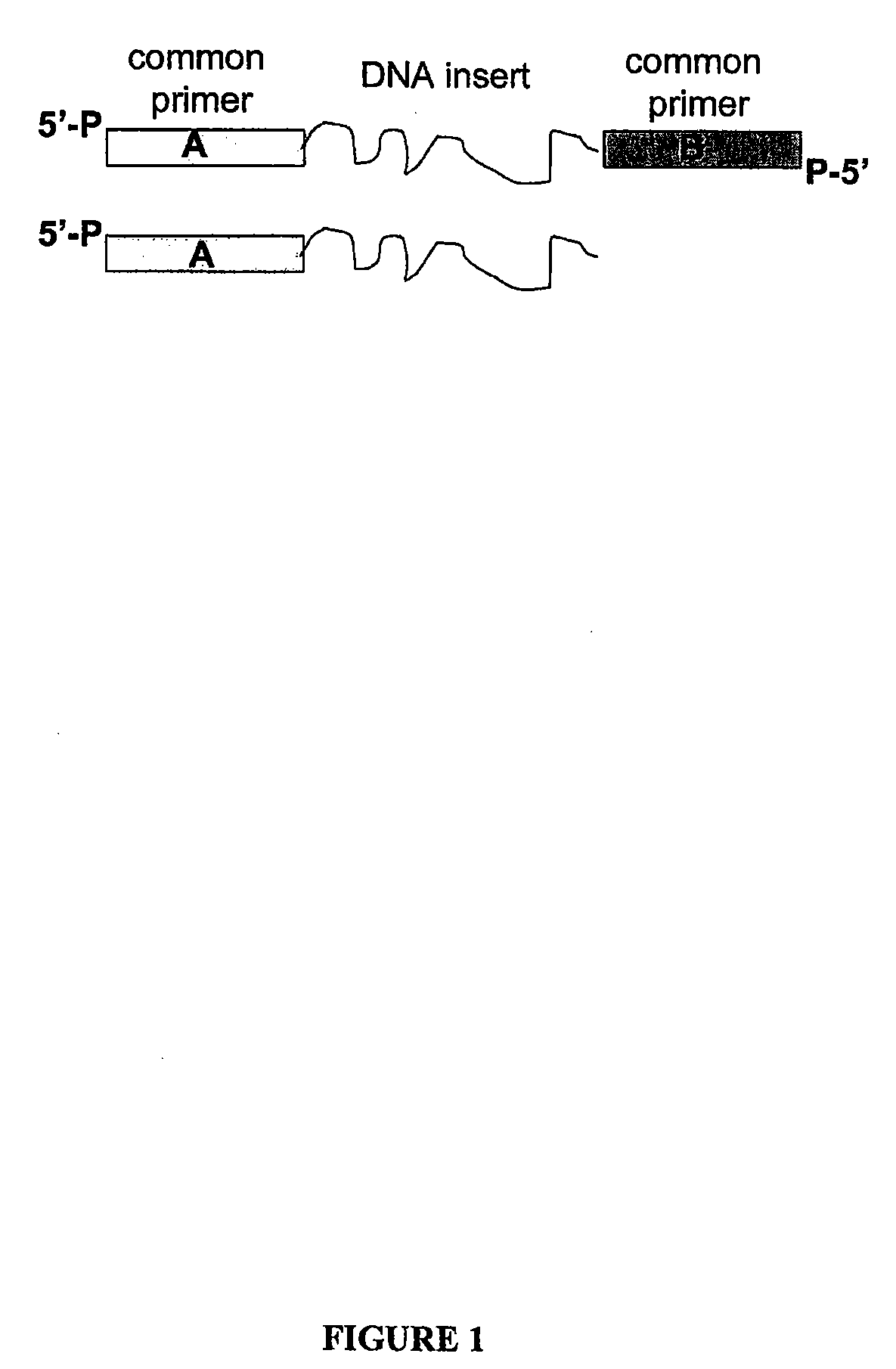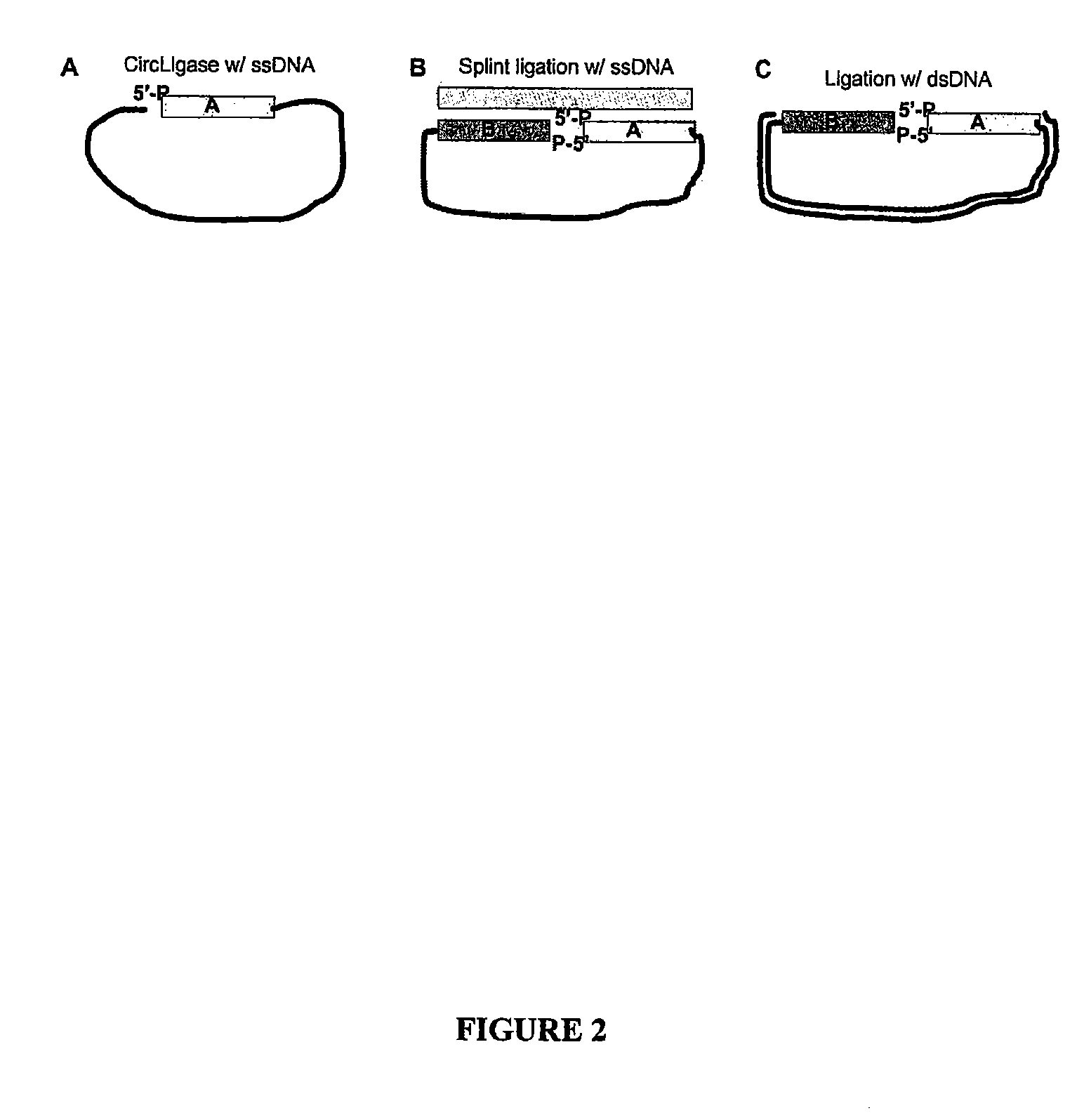Methods for generating amplified nucleic acid arrays
- Summary
- Abstract
- Description
- Claims
- Application Information
AI Technical Summary
Problems solved by technology
Method used
Image
Examples
example i
Generation of Clonal DNA Particles (Balls)
[0186]This example describes the generation of clonal DNA balls.
[0187]Preliminary data was obtained on assembling clonal DNA balls onto a patterned slide substrate. The DNA balls were created by rolling circle amplification (RCA) of synthetic circles generated by CircLigase™-mediated ligation of phosphorylated oligonucleotides. CircLigase™ is a single stranded DNA ligase capable of circular ligation of ssDNA. The DNA strands were condensed into DNA balls by isopropanol precipitation from 2.5 M ammonium acetate solution. A biotin moiety was incorporated into the DNA balls during the RCA step. After precipitation, the DNA balls were resuspended in 1 M 6×SSPE (1M NaCl, 100 mM phosphate buffer, pH 7.5) buffer. A patterned slide was created from a BeadChip™ (Illumina) by assembly of 0.85 μm streptavidin beads into 1 μm wells. The DNA balls were incubated on the surface of the BeadChip™ for 10 minutes and excess balls were washed away. The DNA bal...
example ii
Generating Type IIS and III gDNA Libraries
[0190]This example describes a method for creating a full complexity genomic DNA library using ligation of adapters with built-in TypeIIS or Type III restriction enzyme sites. This can be used for a number of applications including DNA sequencing.
[0191]One method for generating gDNA libraries uses digestion with EcoP15I, a type II restriction enzyme, that has the longest “reach” into a nascent sequence ( 25 / 27 bp). An EcoP15I gDNA library, or similar type IIS and III restriction enzyme library, has the following strengths: (1) the method is relatively insensitive to fragmentation of gDNA by nebulization or DNAseI (since only approximately 26 bp is cut from either end of the fragments, the protocol can tolerate fragment sizes from 50 bp to several thousand bp); (2) the approximately 26 base insert of the library is sufficient for most sequence assembly tasks resulting from sequencing of the library; (3) the method is compatible with short seq...
example iii
Targeted Amplification and Sequencing
[0196]This example describes methods for targeted amplification and sequencing of the resultant amplified library. It has particular relevance for highly-parallel sequencing methodologies.
[0197]One method for targeting nucleic acid sequences utilizes whole genome targeted representation. A universal biotinylated primer is incorporated using random primer amplification (RPA) (see FIG. 19). FIG. 19 shows creation of a locus-specific reduced representation. FIG. 19A shows random-primed labeling (RPL) of gDNA. gDNA is labeled using a standard RPL protocol employing random N-mers (N=6-18) with universal priming tail (U1 sequence or A) and biotin label. FIG. 19B shows locus-specific primer extension on immobilized RPL product. The biotinylated RPL product is immobilized on a streptavidin solid-phase surface, and locus-specific primers (L1, L2, L3, etc) containing a second universal tail (U2 or B), for example, on the 5′ end, are annealed to the product...
PUM
| Property | Measurement | Unit |
|---|---|---|
| Length | aaaaa | aaaaa |
| Length | aaaaa | aaaaa |
| Length | aaaaa | aaaaa |
Abstract
Description
Claims
Application Information
 Login to View More
Login to View More - R&D
- Intellectual Property
- Life Sciences
- Materials
- Tech Scout
- Unparalleled Data Quality
- Higher Quality Content
- 60% Fewer Hallucinations
Browse by: Latest US Patents, China's latest patents, Technical Efficacy Thesaurus, Application Domain, Technology Topic, Popular Technical Reports.
© 2025 PatSnap. All rights reserved.Legal|Privacy policy|Modern Slavery Act Transparency Statement|Sitemap|About US| Contact US: help@patsnap.com



